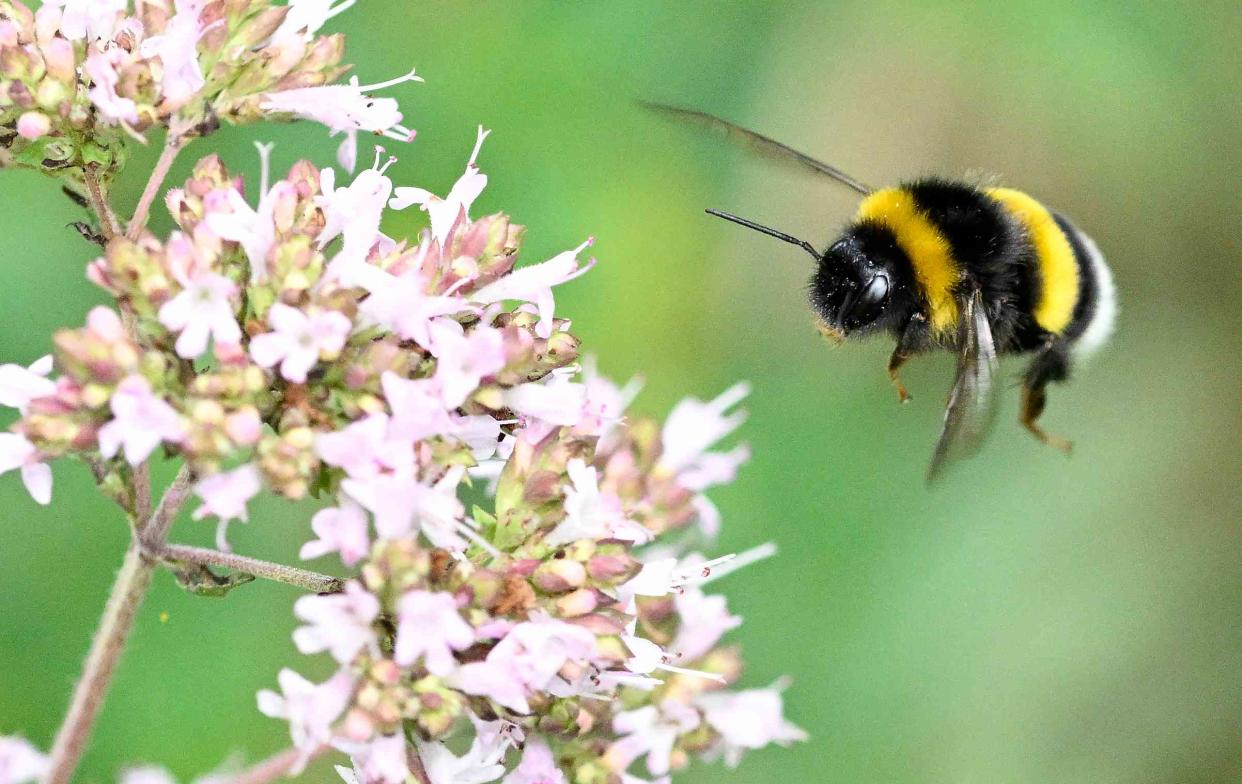Carpenter Bee vs. Bumble Bee: How to Spot the Difference

DAMIEN MEYER / Getty Images
If you’ve walked outside and heard a buzzing noise, bees are likely visiting your home to enjoy the surrounding plants and flowers.
The two most common types of bees are carpenter bees and bumble bees, so your visitors are probably one or both of these species. These bees may look alike, but their behaviors are drastically different and each type presents its own issues that can cause headaches for homeowners.
Learn about the differences between carpenter bees vs. bumble bees to know how to handle your buzzing guest.
Carpenter Bee and Bumble Bee Identification
At first glance, carpenter bees and bumble bees look similar, but there are a few key differences that set them apart.
Abdomen: Carpenter bees have smooth abdomens that are black, green, or purple Bumble bees are hairy with black and yellow bands on their abdomens.
Head: Carpenter bees have larger, black heads. Bumble bees have black and yellow heads.
Size: Carpenter bees tend to be larger than bumble bees.
Wings: Carpenter bee wings appear iridescent in sunlight, while bumble bee wings look more translucent.
Behavior Differences
Carpenter bees are less social than bumble bees, and they typically nest alone rather than in a colony.
Bumble bees live in colonies with a few hundred insects that include a queen, female workers, and male bees (called drones). The queen bee is the only one that can lay eggs and it’s up to the female workers to pollinate plants and flowers.
Bumble bees are also able to fly in colder temperatures and will often be seen in early spring to pollinate early-blooming plants.
Nesting Differences
Carpenter bees are named as such because they like to burrow into wood to make their nests. If you notice wood shavings outside of holes in the wood, that could be a sign of carpenter bees. They tend to choose wood that is soft or decaying. Carpenter bees often nest in the same place year after year and over time, can cause damage to wooden structures.
Bumble bees nest in underground burrows. While this doesn’t pose a threat to your home, the bees may be aggressive if you accidentally step on the nest. Bumble bees also build a nest in a different spot every year.
Pollinator or Pest?
Both carpenter and bumble bees are pollinators and feed on the nectar and pollen of plants and flowers. By collecting pollen from flowers, bees transfer some of the pollen to other flowers, which fertilizes plants and encourages growth.
Both bees will sting if they or the nest are provoked, but only the female bees have stingers. Bumble bees are much more defensive than carpenter bees. A female bumble bee can sting repeatedly without losing its stinger. Neither bee is aggressive as long as they are left undisturbed.
How to Get Rid of Bees
Having bees around your home is typically a good thing since these insects are important pollinators supporting the ecosystem. However, if you’d prefer your garden and yard to be bee-free, follow these steps to get the bees to buzz off:
Use a bee trap. Purchase a bee trap at your local home improvement store to lure bees into a container and trap them.
Seal their nest. Once you find a bee nest, try sealing it up or placing a barrier that prevents bees from leaving the nest so they can’t eat or expand the colony.
Call a pest expert. If you’re nervous about handling the bee situation yourself, enlist the help of a pest control company. Pest experts are trained to safely remove bees using a combination of treatments and traps.
Tip
Bees prefer the warmth, so hang your bee trap in a sunny spot on your property.
How to Keep Bees Away from Your Home
Here are a few prevention measures you can take to avoid attracting bees to your home:
Avoid planting flowers. Bees are attracted to flowers to consume the nectar and pollen from these plants. You can prevent bees by not planting many flowers near your home so bees are encouraged to find food elsewhere.
Keep wooden surfaces sealed. Avoid carpenter bees from burrowing holes in your wood by keeping wood structures sealed and in good condition. Fill in any holes with caulk or wood filler to prevent bees from nesting in those areas.
Use natural repellents. Bees are naturally repelled by certain scents, such as peppermint and vinegar. Plant peppermint in your garden or spray vinegar around areas where you’ve seen bees buzzing around.
Read Next: How to Keep Bees Away From the Pool
Read the original article on The Spruce.
